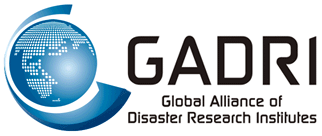- Home
- About
- Events
- Members
- About Members
- Member Institutes
- Algeria
- Argentina
- Australia
- Austria
- Bangladesh
- Brazil
- Bulgaria
- Canada
- China, People's Republic of
- Colombia
- Ecuador
- Egypt
- European Commission
- France
- Germany
- Ghana
- Hong Kong (People's Republic of China)
- India
- Indonesia
- Iran (Islamic Republic of)
- Israel
- Italy
- Japan
- Korea, Republic of
- Lao PDR
- Malaysia
- Mexico
- Morocco
- Nepal
- New Zealand
- Oman
- Phillippines
- Slovakia
- South Africa
- Sri Lanka
- Sudan
- Sweden
- Switzerland
- Chinese Taipei
- Thailand
- Turkey
- United Kingdom
- United States
- Vietnam
- Zimbabwe
- Membership
- Activities
- Resources
- GADRI Archives
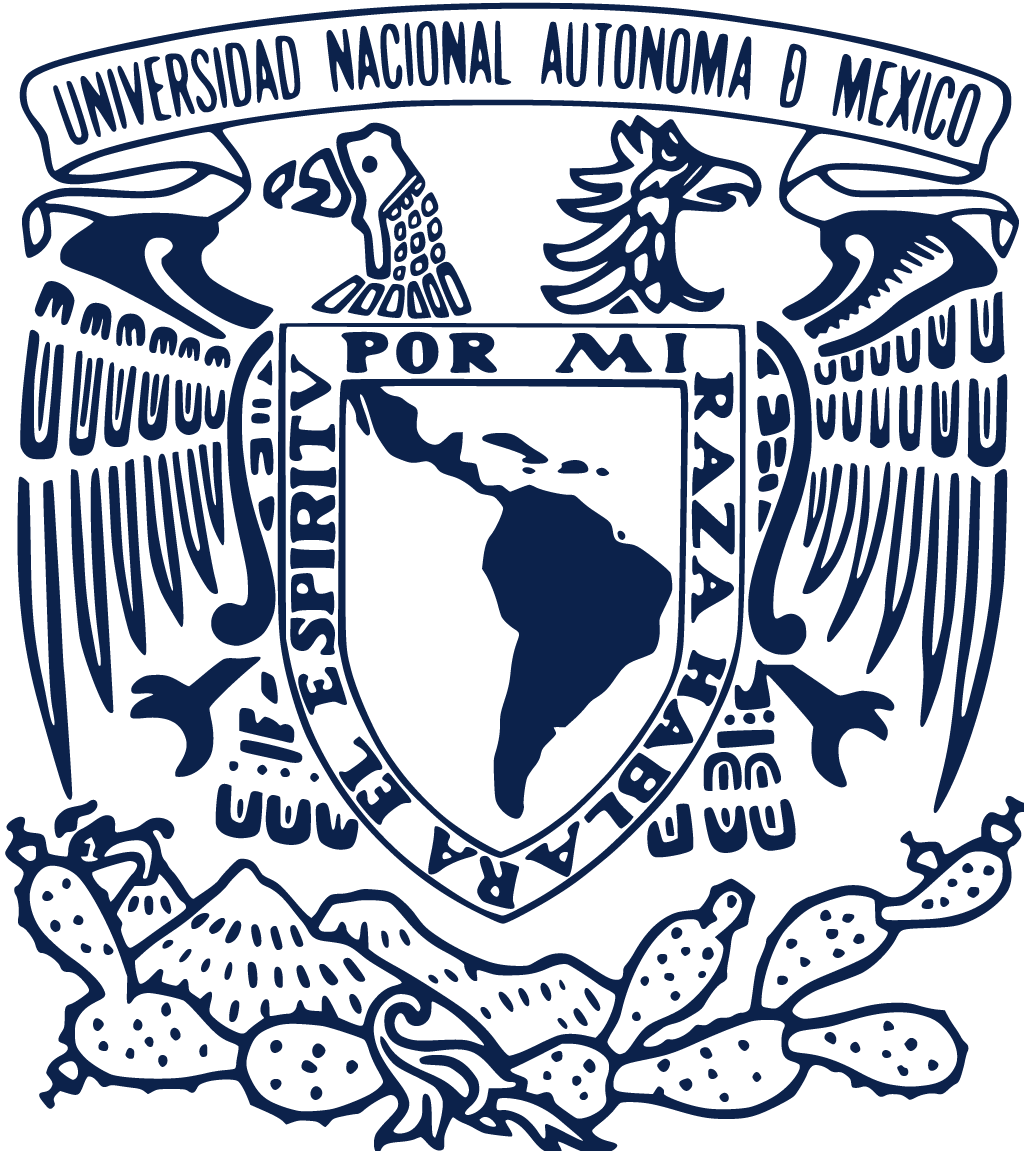 |
Institute of Geography, National Autonomous University of MexicoMéxico, D.F. |
| Outline In June 1943, the University Council approved the creation of the Institute of Geography, which began its activities in Palma street number 9 in the Historic center of Mexico City. In 1954 it moved to Ciudad Universitaria (CU), a former adjoining the Tower of Sciences, Humanities Tower today-II and in 1975 was changed within the same University City, the Circuit of Scientific Research building. The Institute of Geography has played a major role in university and national scientific development to give rise to the Center for Research in Environmental Geography (CIGA), Campus Morelia, created in August 2007. The Institute of Geography is the oldest and largest of its kind in central Mexico, currently its structure consists of three departments (Economic Geography, Physical Geography and Social Geography), a Laboratory Geospatial Analysis (LAGE), a Section Editorial (SE ) and two support units (Unit -UTI- Information Technology and Library which has more than 35,000 titles and houses the most comprehensive and important collection of the country in the field of geography, as well as one of the best map libraries, consisting of more than 20,000 documents). [detail] --> |
|
International Centre for Integrated Mountain Development (ICIMOD)Kathmandu |
|
| Outline The International Centre for Integrated Mountain Development (ICIMOD) is a regional intergovernmental learning and knowledge sharing centre serving the eight regional member countries of the Hindu Kush Himalayas - Afghanistan, Bangladesh, Bhutan, China, India, Myanmar, Nepal, and Pakistan - and based in Kathmandu, Nepal. Globalization and climate change have an increasing influence on the stability of fragile mountain ecosystems and the livelihoods of mountain people. ICIMOD aims to assist mountain people to understand these changes, adapt to them, and make the most of new opportunities, while addressing upstream-downstream issues. We support regional transboundary programmes through partnership with regional partner institutions, facilitate the exchange of experience, and serve as a regional knowledge hub. We strengthen networking among regional and global centres of excellence. Overall, we are working to develop an economically and environmentally sound mountain ecosystem to improve the living standards of mountain populations and to sustain vital ecosystem services for the billions of people living downstream now, and for the future. [detail] --> |
|
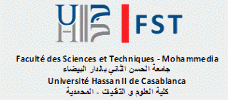 |
Faculty of Sciences and Techniques of Mohamadia
|
| Outline Establsihed in 1975, University of Hassan II of Casablanca is a public university locatin in Casablanca, Morocco. There are over 24,000 total students, including local and foreign. Full-time faculty teachers and professors are over eleven hundred, making it the third largest university in Morocco. Official staff total 850 people. The Faculty of Sciences and Techniques-Mohammadia (FSTM), part of Hassan II University of Casablanca, belongs also to a network of eight Faculties of Sciences and Techniques (FST) throughout Morocco whose main vocation is academic training in science and technology. The FSTM, located in an area with strong industrial activity, and a vulnerable coastal area. Indeed the city of Mohammedia, and its wider region, namely Casablanca-Settat are facing important risks of floods and erosion. Probabilistic risk assessments for the entire country reveal that floods, earthquakes and tsunamis are expected to cost on average USD 500 million annually, of which flooding constitutes the biggest part. The main disaster risks in Morocco are floods and droughts, earthquakes, tsunamis, coastal erosion and sea level rise.sources. [detail] --> |
|
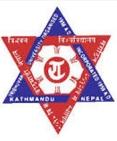 |
Institute of Engineering, Tribhuvan UniversityPatan |
| Outline Nepal being the landlocked country in the northern hemisphere and sandwiched between two Asian giants: China and India, has the glory of having world's highest mountain- Sagarmatha (Everest) and being the birth place of Lord Buddha- Light of Asia. The beauty of the country is extreme diversity within close proximity of topography, ecology, flora and fauna. Owing to the topography and people, Nepal has rich cultural heritage. Visualizing the economy, Nepal is in the process of transformation. The concern now is the development of the country and prosperity of the people. Prosperity is not only the material well-being; it is building capacity of the people with rights and responsibility. Institute of Engineering (IOE) visioned to be instrumental to achieve this national goal of prosperity of the country and the people. This can be done by producing capable and competitive engineering graduates. Engineering education has two dimension; skill developing and capital formation. Both are equally important for the economic growth of the country. As the world is moving towards knowledge based economy, all the nations are entering into 'global skill race'. In this race, education knowledge and skills are assuming ever-greater importance. Understanding this essence, IOE is striving to move forward with market relevant programs and research works. [detail] --> |
|
 |
GNS ScienceLower Hutt |
| Outline We are New Zealand's leading provider of Earth, geoscience and isotope research and consultancy services. We apply our scientific knowledge from the atomic to the planetary scale to create wealth, protect the environment, and improve the safety of people. Since 1865 we have demonstrated scientific excellence in a country that straddles two tectonic plates, where earthquakes were first associated with geological faulting, and whose first Nobel Laureate, Ernest Rutherford, saw that radioactive isotopes could be used for geological dating. Today, we continue these investigations, from the atomic to the planetary scale. These activities are expressed through our Māori name, Te Pū Ao, which means "the foundation, origin, and source of the world". We are proud of our 140-year-old heritage inherited from New Zealand Geological Survey [1865-1990], DSIR Geophysics Division [1951-1990], Institute of Nuclear Sciences [1959-1992], and DSIR Geology and Geophysics [1990-1992]. In 1992, Crown Research Institutes (CRI) were established by the New Zealand Government. While our registered company name remains the Institute of Geological and Nuclear Sciences Limited, in 2006 we re-branded to become GNS Science. [detail] --> |
|
 |
German University of Technology OmanMuscat |
|
Outline GUtech provides students with the education required to become highly qualified and socially responsible graduates, guided by German [detail] --> |
|
 |
Partnerships in Environmental Management for Seas of East AsiaQuezon City |
|
Outline PEMSEA carries out this mandate through these operating mechanisms: East Asian Seas (EAS) Congress Held every three years, the Congress serves as an intellectual melting pot of the various stakeholders, partners and collaborators, and is an opportunity to share knowledge and monitor the progress of the SDS-SEA programmes and projects. Among the various events of the Congress are a Ministerial Forum and an International Conference. The Ministerial Forum is a venue for providing policy directions and commitments related to SDS-SEA implementation, while the International Conference conducts knowledge exchange activities and discussions targeted at specific sectors' issues, while promoting priority programmes and various mechanisms and encouraging corporateresponsibility the business community. [detail] --> |
|
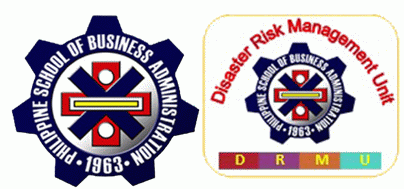 |
Disaster Risk Management Unit, Graduate School of Business
|
|
Outline Philippine School of Business Administration (PSBA) was incorporated as a full-fledged school in 1966. It is duly recognized by the Philippine Commission on Higher Education (CHED) and included in World Higher Education Database (WHED). It is also part of United Nations Educational, Scientific and Cultural Organization's (UNESCO) and the International Association of Universities (IAU) so called IAU/UNESCO List.
The main rationale of the School is to help meet the country's management requirements for more advanced and sophisticated industrial and commercial life and government responsibilities as well. PSBA started its Research Arm for Disaster Risk Management (DRM) researches and projects in 2001. Currently, to fulfill the country's demand for DRM formal education, PSBA-Manila has launched the Master of Business Administration (MBA) specialization in Disaster Risk Management (DRM) program in first semester of Academic Year 2017-2018 being the first Higher Education Institution (HEI) to offer a formal DRM education in the Philippines. Researches on Disaster Risk in The Philippine School of Business Administration (PSBA) started in 2001, when Dr. Teodoro Santos and Prof. Harry Lorenzo along with Dr. Teodorico Molina approved the proposal of Dr. Tabassam Raza, while taking up his Doctorate in Business Administration, for his dissertation that was focused towards Disaster Risk Management (DRM). The pilot research entitled "Strategic Model: Conceptualization and Implementation of a Total Disaster Risk Management: Cherry Hills Tragedy, Antipolo City", was published on 2002 as a first of its kind of researches on disasters in the Philippines. In 2003, the DRM Unit was founded under the Graduate School Research Center of PSBA where Dr. Raza was appointed Special Associate for the DRM and Information Technology (IT) Researches and Projects for PSBA. From here on, researches on DRM with focus on Business Continuity were done under the name of the School. [detail] --> |
|
 |
National Hydraulic Research Center, National Engineering Center, University of the Philippines at DilimanDiliman, Quezon City |
| Outline The National Hydraulic Research Center (NHRC) was established in 1973 as a unit of the University of the Philippines with the aim of creating a R & D center within an academic environment to conduct research and provide technical advice on various problems of water resources development and management, hydrology, hydraulic and coastal engineering, fluid mechanics, and other related fields. Its creation in the 1970's was very timely since the national government then started undertaking several water resources projects which required the technical inputs provided by both local and international experts in the field of water resources. Research Achievements and Challenges: In almost 40 years of its existence as a unit under the umbrella of the U.P. College of Engineering and the National Engineering Center, NHRC has developed and served as the national center of water-resources expertise, and provided the support organization and physical facilities for conducting the necessary physical and mathematical modeling research and producing technical output and advice in water resources engineering and management needed by government and the private sector. The outputs and activities of NHRC are in the forms of improved designs and plans of hydraulic structures (developed either by physical or mathematical modeling), engineering application software, technical training and transfer of technology to clients' personnel, technical analysis and advice on particular problems, publications, lectures/seminars/conferences, and consultations and meetings with various concerned sectors in the water resources field. [detail] --> |
|
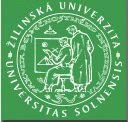 |
Faculty of Security Engineering, University of ZilinaZilina |
| Outline The history of the Faculty of Security Engineering began in 1952 when the Faculty of Railways at the Military Technical Academy (VTA) in Brno was founded. Due to the reorganisation of the university system in the year 1953, the VTA was incorporated into the Technical College of Railways in Prague and named the Military Faculty. The University moved to Žilina in 1961 and it was renamed the University of Transport, later on the University of Transport and Communications. In 1998, the Military Faculty was renamed the Faculty of Special Engineering of the University of Žilina and the military studies were ended towards the year 2004. All these changes influenced the structure of educational programmes offered by the Faculty. The courses aim mainly at solving natural, ecological, economic, social and other crisis situations, civil security and rescue services. |
|
Disaster Management Training and Education Centre for Africa
|
|
| Outline University of the Free State is one of the oldest and top universities in South Africa with a total of approximately 35 000 students. Its Disaster Management Training and Education Centre for Africa (UFS-DiMTEC) based in the Faculty of Natural and Agricultural Sciences is the largest post graduate program in disaster management in Africa with more that 60 post graduate diploma students, 50 Master students and 20 PhD candidates. When disaster strikes, all living creatures naturally react with a fight-or-flight response. But what if you're not strong enough, or have nowhere to run? This is when suffering sets in. Hunger, death, degradation, loss, damage, destruction, desperation. Since 2001, we have the vision to reduce disaster risk - because we can! At the University of the Free State (UFS) Disaster Management Training and Education Centre for Africa (DiMTEC), we strive towards informing the public about disaster risk reduction through education. Our master's, postgraduate degrees in disaster management, short courses, and research are of the highest quality. The recent addition of a PhD ensures that research towards making a difference continue in various fields. DiMTEC's first course was approved and registered by the South African Qualifications Authority in 2001, after which we joined the Department of Agricultural Economics in the vision of becoming an independent centre, which came about in 2005. The education and research at DiMTEC is multi disciplinary with a focus on disaster risk reduction in Africa. We have a footprint in more than 17 African Countries. [detail] --> |
|
[ 25 December 2015 ]
 |
Center for Urban Water (CUrW) |
| Outline |
|
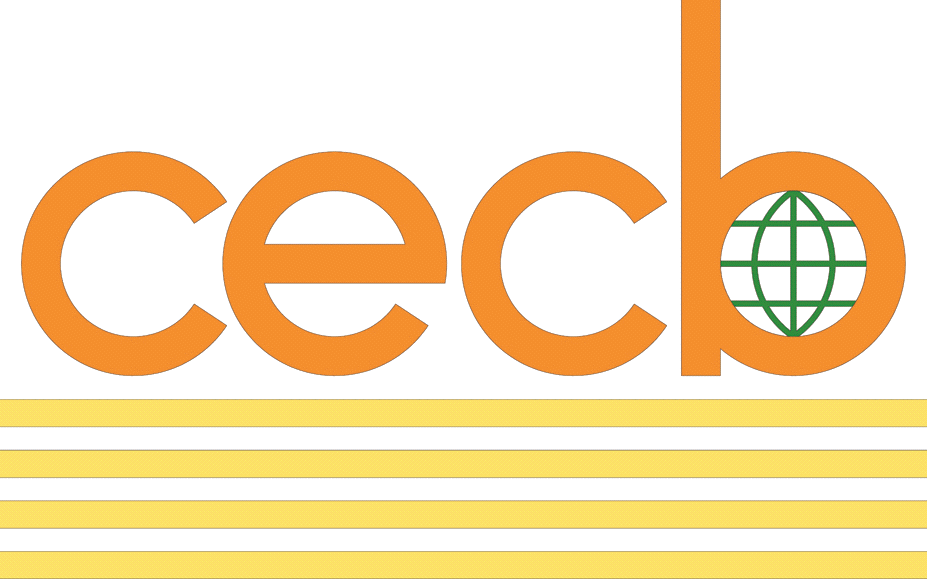 |
Central Engineering Consultancy Bureau (CECB)Colombo |
| Outline The Natural Resources Management and Laboratory Services (NRM&LS), is an AGM unit of the Central Engineering Consultancy Bureau (CECB) functioned under the Ministry of Mahaweli Development & Environment, Sri Lanka. Finding the utmost importance of preserving the environment while catering the construction sector, CECB has taken the initiative of establishing the NRM&LS, to fulfill the construction and industry related environmental issues in accordance to the government regulations. Stating with the Moragahakanda Hydro Power Project in year 2000, today NRM&LS is engaged with a wide variety of Environmental Impact Assessments, Disaster Risk Assessments, Environmental Management Plan and Social Safeguard Studies both locally and internationally. Some of the major projects include Conflict Affected Region Emergency (CARE) Project conducted in Nothern Province in Sri Lanka, range of Irrigation Projects, Water Supply Projects, Mini Hydro power projects, Port City Development Project, Waste to energy development project which has a national significance and internationally for many Hydro Power projects and Social and Environmental Assessment such as the Nyamwamba Small Hydro Power Project ,Uganda which our commitment and dedication is highly involved. The CECB laboratory services of NRM&LS comprises an advanced laboratory spectrum providing a range of sample testing including the Chemical and Environmental Laboratory, Advanced Concrete Testing Laboratory, Advanced Soil Testing Laboratory, Geotechnical Investigations and foundation excavation. Theses laboratories are well-equipped with the advanced instruments and latest technology network in which highly trained professionals involved in carrying out diversified testing methods and research projects to furnish the best solutions for around 2000 clientele. At present, NRM&LS has its major involvements in the Mega City Development Projects conducted under the Government of Sri Lanka which concerns on Disaster Risk Management such as Floods, Droughts and Landslides. Our ultimate goal is to achieve sustainable development of the society through strong commitment in delivering engineering services entangled with public-private partnerships in the global industry. [detail] --> |
|
 |
National Building Research Organizatio (NBRO)Colombo |
| Outline National Building Research Organisation (NBRO) the premier research & development institute established in 1984 has now grown in to a successful technical service provider and research & development institution where experts from multiple disciplines have teamed up and dedicated to create a disaster free built environment for the nation. With the expansion of housing construction activities, particularly in the rural sector, the need for research and development into materials and technology locally available was felt. In order to provide this service centrally, the National Building Research Organization (NBRO) was established under the Ministry of Local Government, Housing and Construction in March 1984 by the merger of former Building Research Institute (BRI) of the State Engineering Corporation and the Soil testing Laboratory of the Department of Buildings. In May 1988, the NBRO was brought under the Urban Development Authority (UDA), by a Cabinet decision. The activities of the NBRO expanded considerably and covered the areas of Human Settlements Development, Environmental Development and Structural Engineering Research and Project Management. Research and Development work on disaster mitigation related to landslides was also planned and carried out from 1988 onwards. Thus research and development activities of the total shelter sector were undertaken by the NBRO. |
|
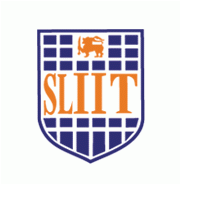 |
Sri Lanka Institute of Information Technology (SLIIT)Colombo |
| Outline SLIIT was established in 1999. We opened our doors to 400 students in Metro Campus in Colombo. Currently, we offer both undergraduate and postgraduate courses and accommodate over 7000 students, including international students from various regions in the world. More than 9000 alumni have graduated from our three faculties: Business, Computer, and Engineering. We take great pride in producing graduates who make meaningful contributions to their communities and professions. Among our diversely qualified graduates, alumni are software engineers, engineers, business analysts and noted entrepreneurs. |
|
 |
UNESCO Chair in Water ResourcesKhartoum |
| Outline UNESCO Chair in Water Resources (246), established in 1994 at Omdurman Islamic University (Sudan).
[detail] --> |
|
 |
Global Risk Forum GRF DavosDavos Platz |
|
Outline As the chairman and the organiser of the first IDRC Davos 2006, Walter J. Ammann implemented this request by founding the Global Risk Forum GRF Davos as the institutional framework. GRF Davos is since 2008 the organiser of the IDRC Davos conferences and promotes the worldwide exchange of know-how and expertise, creates solutions and fosters good practices in integrative risk management and climate change adaptation. GRF Davos aims through research, implementation, advocacy and networking activities at serving as a Centre of Excellence in knowledge and know-how exchange for the application of timely and appropriate risk management strategies, tools and practical solutions. GRF Davos is the publisher of two international electronic journals, namely Planet@Risk and the International Journal for Disaster Risk Reduction together with the publisher Elsevier. Research Achievements and Challenges: We aim to improve the understanding, assessment and management of risks and disasters affecting human safety, security, health, the environment, critical infrastructures, the economy and society at large. Our inside expertise, coupled with the experience and knowledge of our global network of engineers, consultants, and scientists, enable us to deliver projects in various domains. We provide services and do research in monitoring processes, risk analysis and provide solutions for the implementation of measures. We intervene in each phase of the disaster risk reduction cycle (prevention, intervention, recovery) with local and international projects contributing to lower collateral and human losses and a safer world. Our research focuses on: - Integrative Disaster Risk Management processes - Resilience - Vulnerability - Natural Hazards - Climate Change Adaptation and Mitigation - Business Continuity - Sustainable Development - Capacity Building, awareness raising Our main goals are:
To provide and manage a network for decision-makers, practitioners and experts from politics, government, IGOs, business, science, NGOs, media and the public [detail] --> |
|
 |
Institute of Earth Sciences, Faculty of Geosciences, University of LausanneLausanne |
| Outline The environment and its relations with society are at the heart of research and teaching in the Faculty of Geosciences and Environment. This broad subject area is examined through a disciplinary approach (geology, geography) and an interdisciplinary approach (environmental sciences) at the interface of natural, human and social sciences. Teachers-researchers at the Institute of Earth Sciences and the Institute of Earth Surface Dynamics analyse and model historic and recent processes testifying to physical, chemical and biological changes on our planet linked to natural and anthropogenic factors. Teachers-researchers at the Institute of Geography and Durability are interested in the organisation of space, ecological thought, relations between society and the environment, and the sustainability of our ways of life. Taking into account the complexity, plurality and diversity of geo-environmental challenges, educational programmes at the Faculty of Geosciences and Environment are based on fundamental sciences (mathematics, natural sciences, and human and social sciences) and their reconfiguration, combination and application in the real world. In addition, they find expression in different terrains, including Alpine and urban environments, not only in Switzerland, but also in Europe and elsewhere. After completing a core programme of multidisciplinary courses, students in geosciences and environment can specialise in a number of disciplinary and interdisciplinary fields. [detail] --> |
|
 |
Risk and Crisis Research Centre
|
| Outline Risk and Crisis Research Centre (RCR) develops and communicates knowledge about risk, crisis and security. RCR gathers researchers from nine different disciplines. The centre's activities include research, education and collaboration. Through RCR, you have a unique opportunity to access research results on how risk is perceived and assessed and how crises are managed, all for the benefit of soci [detail] --> |
|
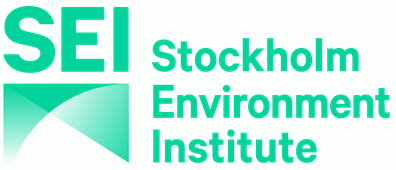 |
Stockholm Environment Institute (SEI)Stockholm |
| Outline The Stockholm Environment Institute is an international non-profit research and policy organization that tackles environment and development challenges. We connect science and decision-making to develop solutions for a sustainable future for all. Formally established in 1989 by the Swedish Government, it has built a reputation for rigorous and objective scientific analysis in the field of environment and development. SEI is:
SEI operates through its eight centres around the world in Sweden, the UK, the US, Thailand, Kenya, Estonia and Colombia. Our work spans from climate, water, air, and land-use issues, and integrates evidence and perspectives on governance, to the economy, gender and human health. SEI's approach is highly collaborative: stakeholder involvement is at the heart of our efforts to build capacity, strengthen institutions and equip partners for the long term. We make sure our knowledge and findings are clearly communicated and accessible to decision-makers and civil-society. We publish our own open access material in leading academic journals and repackage our research to offer effective decision support. To promote debate and share knowledge we convene decision-makers, academics and practitioners, and engage with policy processes, development action and business practice throughout the world. We are committed to transparency and believe that full disclosure of our finances and funding builds trust in our work. The Swedish International Development Cooperation Agency (Sida) is our largest single donor, but we also receive broad support from other development agencies, governments, NGOs, universities, businesses, and financial institutions. More specifically concerning disaster risk reduction, our recent work has been focusing on transforming the relationship between development and disaster risks, as well as integrating the global agendas on SDGs, Climate and the SFDRR. [detail] --> |
|
